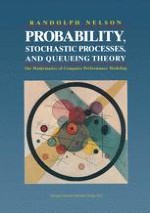1995 | Buch
Über dieses Buch
We will occasionally footnote a portion of text with a "**,, to indicate Notes on the that this portion can be initially bypassed. The reasons for bypassing a Text portion of the text include: the subject is a special topic that will not be referenced later, the material can be skipped on first reading, or the level of mathematics is higher than the rest of the text. In cases where a topic is self-contained, we opt to collect the material into an appendix that can be read by students at their leisure. The material in the text cannot be fully assimilated until one makes it Notes on "their own" by applying the material to specific problems. Self-discovery Problems is the best teacher and although they are no substitute for an inquiring mind, problems that explore the subject from different viewpoints can often help the student to think about the material in a uniquely per sonal way. With this in mind, we have made problems an integral part of this work and have attempted to make them interesting as well as informative.
Anzeige
